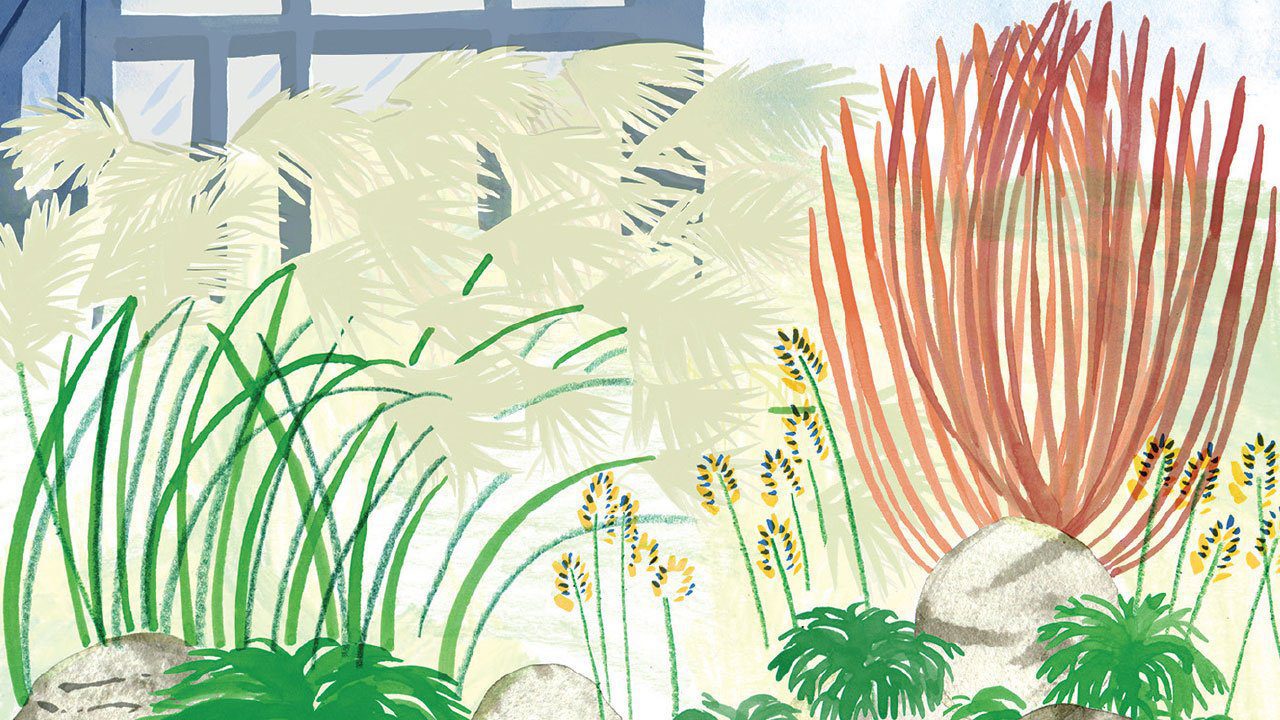Easy-care Ornamental Grasses for Your Garden
A visit to the Minnesota Landscape Arboretum yields grasses that can be showoffs in the garden year-round.
Perennials are a lot like people. Some require a little more love and attention to live their best life; others are fine, and even thrive, left out of the limelight. Ornamental grasses fall in the latter category. They don’t ask for much, aside from an annual spring trim, but can deliver high drama in the landscape by way of striking color, textural plumes, and varying height.
Grasses and sedges, many hardy and some native to Minnesota, are sprouting up in more area gardens as awareness spreads and availability increases. That wasn’t the case about five years ago, says Mary Meyer, a professor and extension horticulturist at the University of Minnesota. “It used to be hard for people to find grasses, but now you can find them at most any local garden center.”
A visit to the Minnesota Landscape Arboretum yields a showy display of 200 native species and cultivars that can seasonally change in color and texture. Meyer began planting what now is one of the largest collections of ornamental grasses in the country at the arboretum when she was a student during the mid-1980s. Today, she leads classes and walks through the gardens to teach people about the benefits of growing ornamental grasses and sedges. The hardy perennials require little upkeep and pair well with other easy-care plantings like native wildflowers, hostas, peonies, dwarf conifers, and roses. Other notable qualities of grasses: They have few pest or disease problems, they grow fast, and they are pollinator-friendly. Shade-loving sedges, close cousins to grasses, have many of the same benefits as sun-loving counterparts and weather well in damp conditions and under trees.
“Sometimes people are worried about how to use the grasses in their gardens,” Meyer says. “Just think of them as any other perennial, like salvia or peony, and use the shape and color to add interest in your garden.”
Mulch 101: What is best for curb appeal? Preventing erosion?
Easy-care plantings
Like ornamental grasses, these low-maintenance plants pack a punch.
Panicle hydrangea: “I have a vanilla strawberry hydrangea tree and I love it,” says Mary Meyer.“It’s tough and vigorous.”
Shrub roses (Canadian Explorer Series): “Many varieties of hardy roses don’t require much care and survive for a long time,” says Meyer.
Peonies and lilacs: “They’re short bloomers here but these two plant scans live a long time because they put their reserves more into their root systems and foliage,” Meyer says.
Hostas: Check out the Minnesota Hosta Society to learn about the hundreds of varieties grown here.
Buyers Desire Lawn Appeal: 5 Steps to a Healthy
Top 10 ornamental grasses recommended by Mary Meyer
- Andropogon gerardii: ‘Blackhawks’
- Carex pensylvanica: Pennsylvania sedge
- Carex muskingumensis: Palm sedge
- Hakonechloa macra: Hakone grass (Japanese origin)
- Molinia caerulea subspecies arundinacea: ‘Skyracer’
- Schizachyrium scoparium: ‘BlueHeaven’ (a Minnesota native Meyer selected for the Arboretum in 2007)
- Schizachyrium scoparium: ‘Blue Paradise’
- Sporobolus heterolepis: ‘Morning Mist’
- Panicum virgatum: ‘Cape Breeze’ Martha’s Vineyard
- Panicum virgatum: ‘Northwind’
Tour more than 200 grasses at the University of Minnesota Landscape Arboretum from 4 to 6 p.m. on September 19. The guided walk, which is $15 for members/$20 for nonmembers, is led by U of M professor Mary Meyer and includes arboretum admission. arboretum.umn.edu
#easycareplantings #curbappeal #love #DIY #homelandscaping #ornamentalgrass, #hostas #bettymostrealestateagent #randybaugherrealestateagent #bettymostagency #bettymostbroker #bettymostrealestate

Trackbacks/Pingbacks